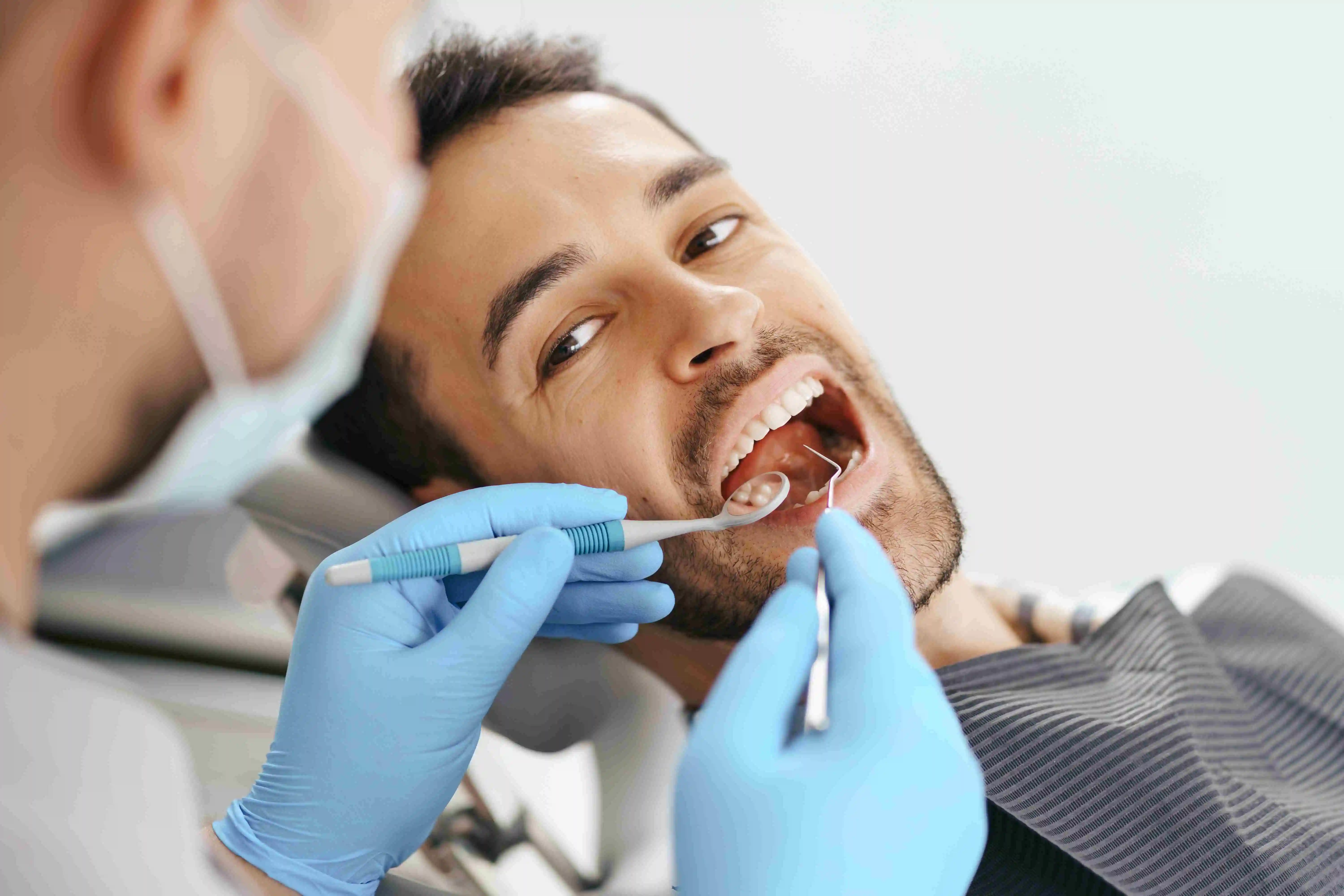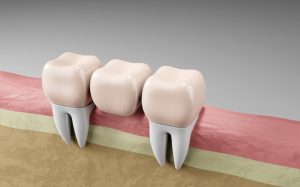The mere mention of gingivitis and periodontitis can send chills down the spine of even the bravest dental patient. No one wants to hear that they have a serious dental disease during their routine checkup. Keep in mind that there are multiple stages of gum disease. If left untreated for a longer period, gum disease such as gingivitis can result in a severe condition like periodontitis. That’s why having knowledge of the causes of gingivitis vs periodontitis and their key differences is important.
We’ve compiled causes, symptoms, and treatment options for gingivitis vs periodontitis in this blog, so you can arm yourself with the knowledge you need to keep your gums healthy and happy.
Table of Contents
Gingivitis Vs Periodontitis
Gingivitis and periodontitis are different stages of gum disease, also known as periodontal disease. The condition of Gingivitis is the earliest form of gum disease characterized by red, inflamed, swollen, and bleeding gums. Fortunately, not all cases of gingivitis progress to periodontitis, so there is hope for patients diagnosed with this condition.
On the other hand, periodontitis is a severe condition involving deep pockets between the teeth, creating more space for plaque and food debris to accumulate. This leads to more significant inflammation, tenderness in the gum tissue, gum recession, and even dark red or purple gums.
Over time, periodontitis can lead to the breakdown of the bone tissue responsible for holding teeth in place, making it the primary cause of tooth loss. Unlike gingivitis, periodontitis is far more severe and not reversible in the same way.
Causes of Gingivitis and Periodontitis

Gum diseases, including gingivitis and periodontitis, are caused by plaque buildup and tartar on teeth. Plaque is a sticky film of bacteria that forms on teeth and gum tissue. If not removed by proper oral hygiene practices, such as brushing and flossing, it can harden into tartar, which a professional dental cleaning can only remove.
Here are some common causes of gum diseases:
- Bad dental hygiene practices: Infrequent brushing and flossing can accumulate plaque and tartar.
- Smoking and tobacco use: Smoking and tobacco use can irritate the gums and make it harder for them to heal.
- Genetics: Genetic makeup may make some people more susceptible to gum disease.
- Diabetes: Having diabetes can raise the likelihood of developing gum disease.
- Hormonal changes: Hormonal changes during pregnancy, puberty, and menopause can make the gums more susceptible to inflammation and infection.
- Medications: Certain medications, such as those used to treat high blood pressure and seizures, can increase the risk of gum disease.
- Poor nutrition: A diet lacking essential nutrients can weaken the immune system, making it harder for the body to fight infections, including gum disease.
Gingivitis Vs Periodontitis – Symptoms
Gingivitis and periodontitis are both types of gum disease, and recognizing the symptoms early is key to preventing the disease from progressing.
Here are some common symptoms of gingivitis and periodontitis:
Symptoms of Gingivitis
- Red or swollen gums.
- Gums that bleed or feel sore when brushing or flossing.
- Bad breath.
- Receding gums.
- A shift in the color of your gums from the normal pink shade to a darker red hue.
If you notice any of these symptoms, it is essential to consult your dentist for a proper diagnosis and treatment.
Symptoms of Periodontitis
- Deep spaces or gaps develop between the teeth and gums.
- Receding gums cause your teeth to appear longer.
- Loose teeth.
- Painful chewing.
- Sensitive teeth.
- Signs of gum disease include chronic bad breath, persistent unpleasant taste in the mouth, bleeding, and tender or discolored gums.
If you notice any of these symptoms, you should schedule an appointment with your dentist immediately. Periodontitis can lead to tooth loss and even more severe health complications without prompt treatment.
Treatment of Gingivitis Vs Periodontitis

The treatment for gingivitis vs periodontitis varies depending on the severity of the disease.
Treatment for Gingivitis
Professional Dental Cleaning
A dentist or dental hygienist can remove the buildup of plaque and tartar that causes gum inflammation.
Improved Oral Hygiene
Brushing your teeth twice a day, flossing daily, and using an antiseptic mouthwash can help prevent the buildup of plaque and tartar that causes gum disease.
Prescription Mouthwash
Your dentist may prescribe a prescription mouthwash containing chlorhexidine, which can help kill bacteria in the mouth.
Antibiotics
If the infection has spread beyond the gums, antibiotics may be needed to help eliminate the bacteria.
With proper treatment, gingivitis can be reversed.
Treatment for Periodontitis
Scaling and Root Planing
This deep-cleaning procedure involves removing tartar and bacteria from the surfaces of teeth and their roots.
Gum Surgery
Gum surgery may be necessary in more severe cases to remove infected tissue and help prevent tooth loss.
Bone and Tissue Grafts
These procedures can help regenerate bone and gum tissue lost due to periodontitis.
Antibiotics
Like gingivitis, antibiotics may be needed to help eliminate the bacteria causing the infection.
How Can I Tell If I Have Gingivitis
Bleeding while brushing or flossing is a crucial sign of gingivitis, which can be reversed with proper treatment. Consult a dentist to evaluate your oral hygiene routine and prevent gingivitis from progressing to periodontitis.
How Can I Tell If I Have Periodontitis
Gum disease progressing to periodontitis can cause discomfort, sensitivity, loosening of teeth, and soreness. Bacteria growing in pockets between gums and teeth can destroy the bone structure and result in tooth loss.
Timely treatment is crucial to prevent permanent damage to teeth and gums. Regular dental check-ups, cleanings, and good oral hygiene habits such as brushing, flossing, and mouthwash can help prevent gum disease.
How Can I Prevent Gingivitis and Periodontitis?
- Maintain oral hygiene to prevent gingivitis and periodontitis.
- Consistently follow an oral hygiene routine to prevent plaque buildup and gum disease.
- A good oral hygiene routine includes brushing your teeth twice daily, flossing between your teeth daily, eating a balanced and nutritious diet, and scheduling routine dental cleanings.
- Regular dental cleanings can help remove any plaque or tartar buildup that may have been missed during your daily oral care routine.
- Smoking is a significant risk factor for gum disease and should be avoided.
Bottomline
If you’ve been diagnosed with gum disease, don’t panic. Periodontal disease affects a significant proportion of Americans aged 30 and above, with 47% of this population experiencing some form of the condition. With proper treatment and optimal oral hygiene, you can make gum disease a thing of the past. The dental team of Anoka Dental specializes in treating gum diseases and strives to ensure that patients achieve proper dental health. Book your appointment with Anoka Dental today.




